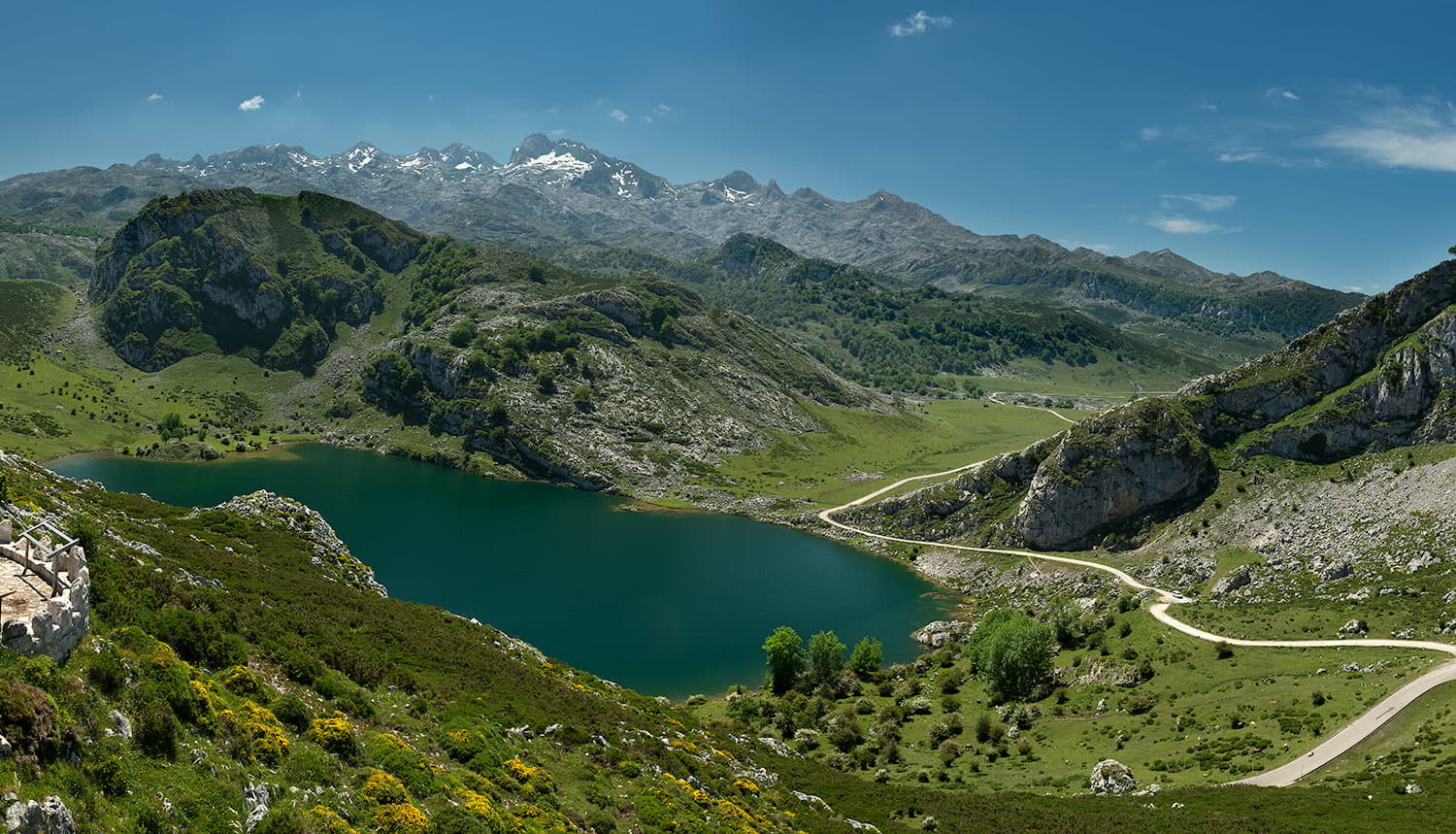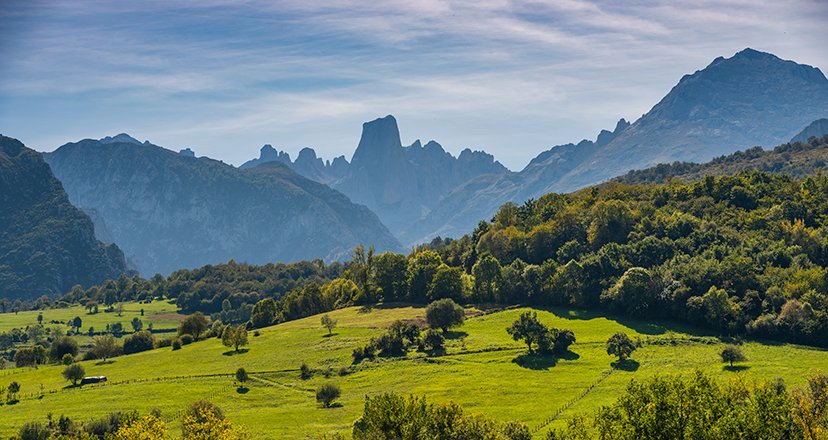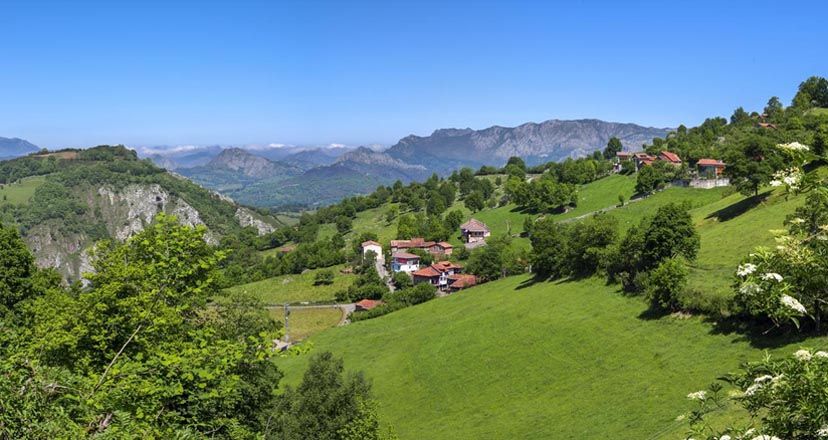Back The most beautiful Asturian villages in Picos de Europa
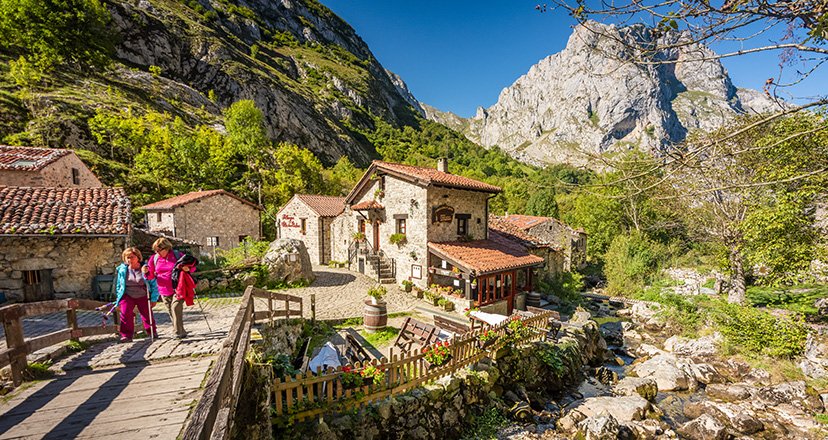
The most beautiful Asturian villages in Picos de Europa
The Picos de Europa and its surroundings are one of the most beautiful and unique places in the whole of Asturias, with villages that look like something out of a fantasy story.
The Picos de Europa and its surroundings are one of the most unique and beautiful places in the whole of Asturias. A setting that combines the green of the Atlantic vegetation with the limestone and rocky ecosystem of the Picos themselves, and this curious combination gives rise to dreamlike landscapes, with villages that seem to have been taken out of a fantasy story.
A tour of these villages will leave you with unforgettable images of an ancestral culture, in which mankind has lived and survived above all from shepherding and cheese-making, and in which resilient and hard-working people are an example of adaptation to a complex orography.
They are villages that give name and body to famous cheeses such as Cabrales or Gamonéu; villages that are the dream of mountaineers and adventurers; villages through which pilgrimage routes and paths pass; villages with incredible panoramic views of the peaks and most emblematic places of the Picos de Europa, and in short, villages that hide artistic and spiritual treasures linked to the foundation of the first Christian kingdom of the Iberian Peninsula in the Middle Ages?
So much so that in these Picos de Europa, specifically in Cuadonga/Covadonga, a historical event took place that gave rise to the birth of the Kingdom of Asturias, a circumstance that was decisive in the subsequent course taken by the future of Western Europe.
So much so that the Picos de Europa National Park is the only one in the world to have a Royal Site such as Cuadonga/Covadonga in its midst, and it is also the only one in the world to have inhabited villages within its territory.
So for all these reasons and characteristics, the Picos de Europa are a fascinating place.
So let's start a unique journey through 10 villages in and around the Picos de Europa!
Covadonga, the origin of a kingdom and a National Park
Cuadonga/Covadonga, in the council of Cangas de Onís, is a remote place, which came to the forefront of history because of the events that took place there more than a thousand years ago and which led to the emergence of the Kingdom of Asturias.
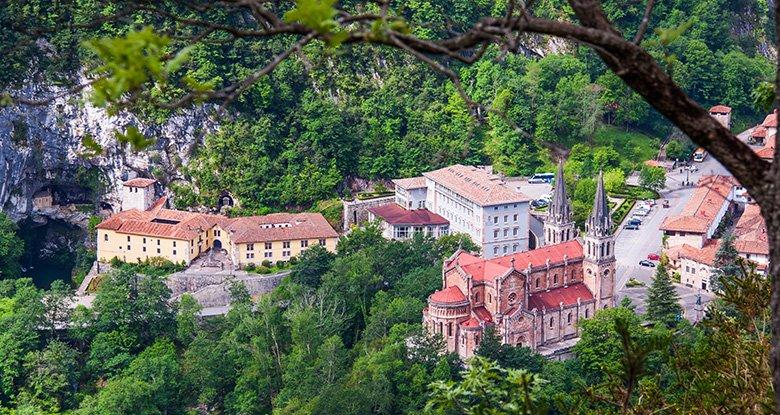
A natural grotto became a Sanctuary, and next to it a monastery was born, and then an abbey, and at the foot of the whole sacred space, the peaceful village of Cuadonga/Covadonga.
Cuadonga/Covadonga is today a marvellous village at the gates of the Picos de Europa National Park and in the heart of the Royal Site to which it gives its name.
And it can boast of being the founding origin of a medieval kingdom of legend, and of having inspired the creation of the first National Park in Spain.
Bulnes, the hidden jewel
Bulnes, in Cabrales, is a place that will not leave you indifferent. With a peculiar physiognomy, it has everything: river, fairytale bridges, church, delicious terraces to have a drink, a viewpoint of the Urriellu (a few metres from the village), and a high neighbourhood called El Castillo, with spectacular panoramic views.
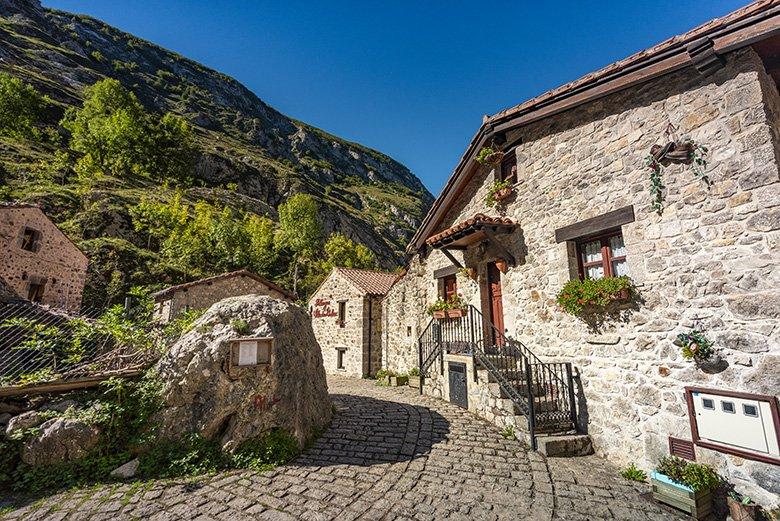
One of its singularities is that it is the only village in Asturias linked to the rest of the world by a rack railway. However, the other option for getting there from Poncebos is the canal del texu - the old-fashioned way -, a wonderful cobbled path along the banks of the river Bulnes (also known as the riega del Texu).
Moreover, in its cemetery is buried the first mountaineer who died trying to climb the Picu Urriellu, the Asturian Luis Martínez, the Cuco, who was found at the foot of the summit on 2 September 1928, by two other famous mountaineers, José Ramón Lueje and Víctor Martínez.
So the history of Bulnes cannot be understood without the omnipresent Urriellu and the tasty Cabrales cheese.
Sotres, the gateway to the great summits
Sotres, in Cabrales, is one of those villages where you can breathe the atmosphere and the biorhythm of the high mountains. This village in the Picos de Europa is a mecca, a refuge, a place of rest and an obligatory stop for hundreds of sportsmen and women from all over the world who start or finish their expeditions in the Picos de Europa, and more specifically in the Central Massif.
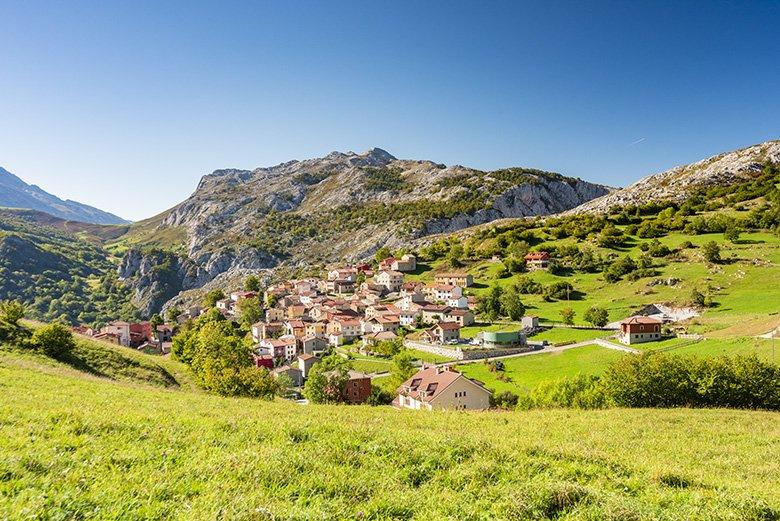
In fact, the summit that has most marked its destiny is the "star" of the Massif Central: the Picu Urriellu or Naranjo de Bulnes.
At the same time, Sotres has not lost the charm of a livestock and farming village, and has managed to combine both facets marvellously. This is why it has one of the most famous Cabrales cheese dairies in the whole region.
Tielve, one hundred percent cheesemaker
All the villages of the Picos have the common denominator of their vocation for livestock and cheese production, but one of those that has most preserved this ancestral tradition is Tielve, whose Cabrales cheeses have such prestige and recognition that they are almost legendary.
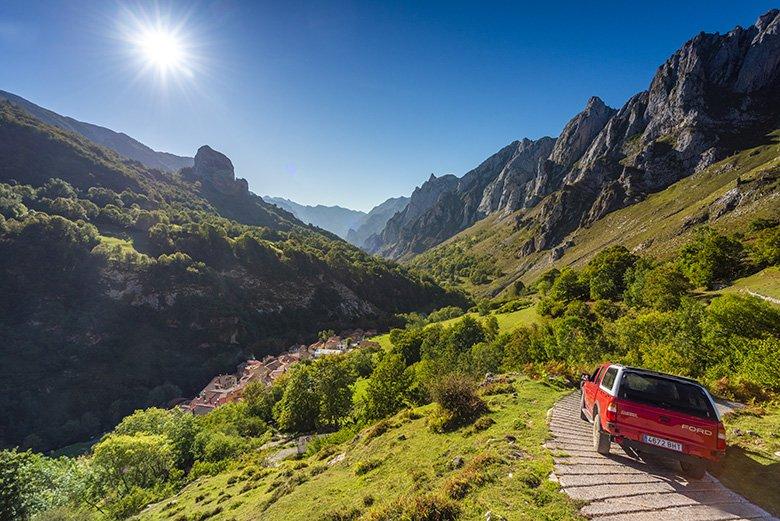
To such an extent that the oldest locals recall stories of emigrants from Cabrales who left for the Americas, and made possible the miracle of tasting a good Cabrales on the other side of the Atlantic.
Be that as it may, Tielve, perched on an imposing hillside, and surrounded by paths that go to and from different areas of the Picos, and of course, always under the murmur of the Duje river, is a world capital of Cabrales cheese.
Camarmeña, with the Picu Urriellu as its banner
Camarmeña, in Cabrales, is one of the most beautiful viewpoints of Picos de Europa, and specifically of the Picu Urriellu.
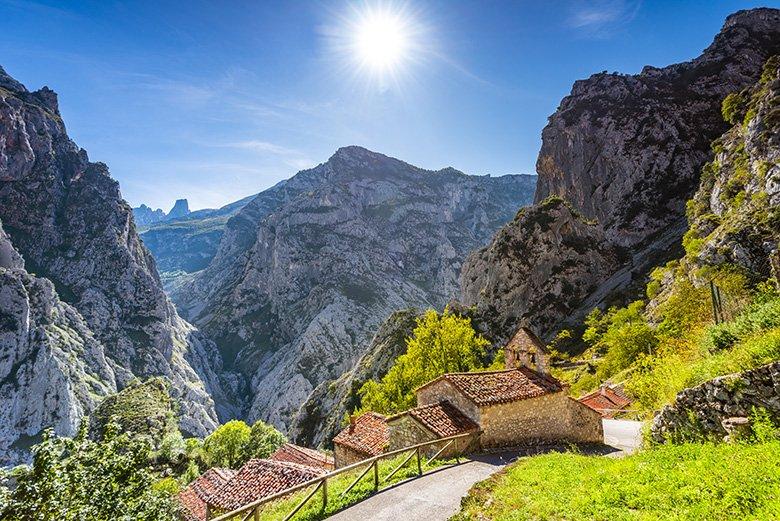
But from this village you will also have privileged views of the Texu channel and even of the upper district of Bulnes.
Steep and hidden, with its church at the top almost caressing the sky, Camarmeña offers a true spectacle of the orography and lifestyle of the villages in the heart of the Picos de Europa.
On its own, the access road to the village is a real exercise in bravery in zigzagging, like a kind of green labyrinth that leads you to a precious treasure...
Gamonéu de Cangas and Gamonéu de Onís, twin villages
Gamonéu de Cangas and Gamonéu de Onís are twin villages in their name, their physiognomy, their environment and their livestock farming, which gave rise centuries ago to their vocation for the Gamonéu cheese to which they give their name.
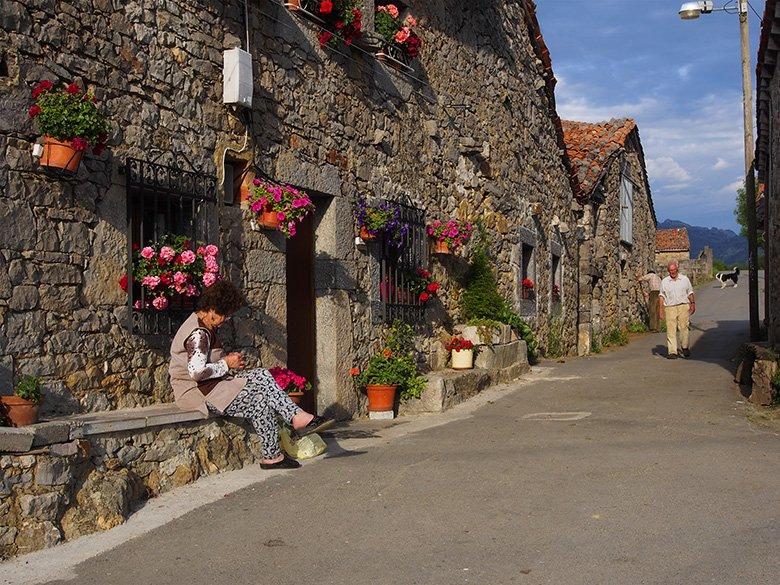
The truth is that these two villages, which share a good neighbourhood, are two places worth a stop. Their neighbours are calm and hospitable, and will immediately tell you all kinds of stories about Gamonéu cheese, and will invite you to try it if they have it on hand.

The geography of these two villages sums up the spirit of Gamonéu cheese: steep and high up, as if looking up to the sky but with their feet very much on the ground. Sober and humble. Full of secrets. Beautiful and discreet. Full of knowledge and flavour, like the essence of one of the best gastronomic creations of mankind: Gamonéu cheese.
Teleña, in the foothills of Mount Priena
Teleña is a village in the council of Cangas de Onís, very emblematic for several reasons. The first of these is that it is a very old settlement that conserves excellent examples of traditional architecture. It also has an emblazoned house with a chapel, where there is a Romanesque carving of the Virgin of Covadonga, which the locals claim is the oldest surviving carving of this Asturian virgin.
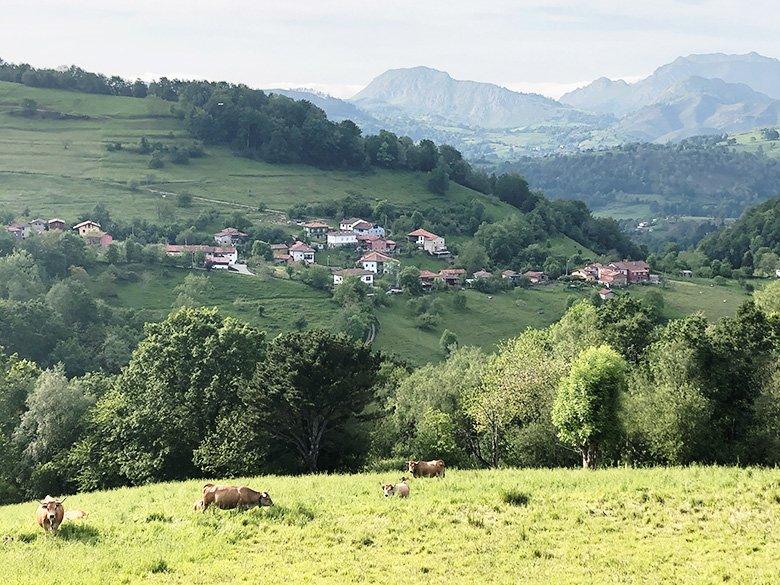
On the other hand, Teleña is the starting point that leads to the Priena peak and Cuadonga/Covadonga. The Priena peak is very significant for being part of the foothills of the Picos de Europa and bordering the National Park, and for having a cross known as the Cross of Priena or the Cross of Pelayo at its summit, which is very visible from the Royal Site of Covadonga.
So at the very foot of Mount Priena you will breathe history, tradition and nature.
Asiegu, the village with the best views of the Picu
So say the best connoisseurs of the Picos de Europa and so it is: Asiegu, a Cabral village marked by the magic of time and legends, is the Asturian village with the best views of the Picu Urriellu.

Both from the highest part of the village, known as the Taranu, and from the Tebrandi sheepfold, and also from the Pedro Udaondo viewpoint, the views of the Picu Urriellu or Naranjo de Bulnes, and of a large part of the Central Massif are prodigious, to the point that they leave you fascinated at any time of the day.
Asiegu, Exemplary Village of Asturias in 2019, is a village designed for tranquillity and happiness, with its old and traditional neighbourhoods, its church with mural paintings, its cheese factory, its cider press and with a remarkable livestock activity.
Asiegu has everything: cigre, legends, sponsored benches, open and hospitable people, and as an eternal watchtower, the Urriellu peak.
Amieva, the gateway to the Angón Valley
Amieva is a beautiful village that belongs to the council that gives it its name.
Amieva is a village with a great mountaineering tradition due to its strategic location, in the vicinity of the famous and beautiful Angón Valley, bordering the westernmost part of the Picos de Europa, and from where you can contemplate the immense limestone wall where the Ordiales viewpoint is located. Pedro Pidal, Marquis of Villaviciosa and the main driving force behind the creation of what is now the Picos de Europa National Park, is buried in this emblematic viewpoint, and from here you will have wonderful aerial views of the entire Angón Valley.
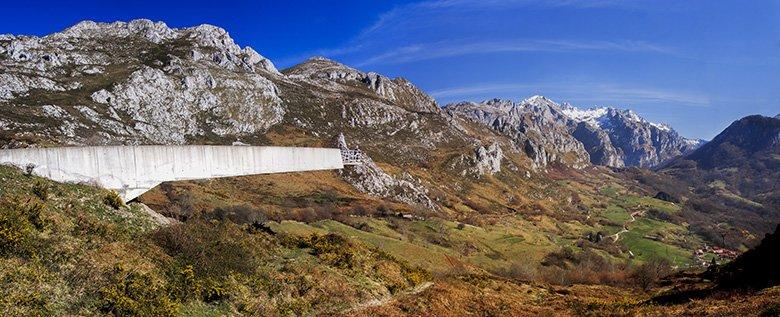
Furthermore, San Juan de Amieva is very close to the beautiful Senda del Arcediano, and is the starting point of the route to Cantu Cabroneru, another mythical summit that will show you powerful views of the Picos de Europa.
Següencu, with an incredible panoramic view of Covadonga and the Picos de Europa.
Següencu is a village perched in the municipality of Cangas de Onís, which preserves its traditional livestock farming essence intact.
Precisely because of its altitude and privileged location, in its vicinity, specifically in the area of the telecommunications repeater, Següencu offers you one of the 360º panoramic views of the whole of Asturias, in which, of course, the Picos de Europa, the river Sella, the Cantabrian Sea, and of course, Cuadonga/Covadonga, which appears small and hidden, surrounded by mountains, stand out.

But Següencu, with its friendly people, its grazing lands and its huts, is also the path and witness of the pilgrimage route from the centre of Asturias to Cuadonga/Covadonga.
From the vicinity of the Picos de Europa National Park, Següencu will make you breathe in first hand all the nature and culture of this genuine region.

Subscribe to our newsletter and take advantage of offers, discounts, and news
Subscribe

